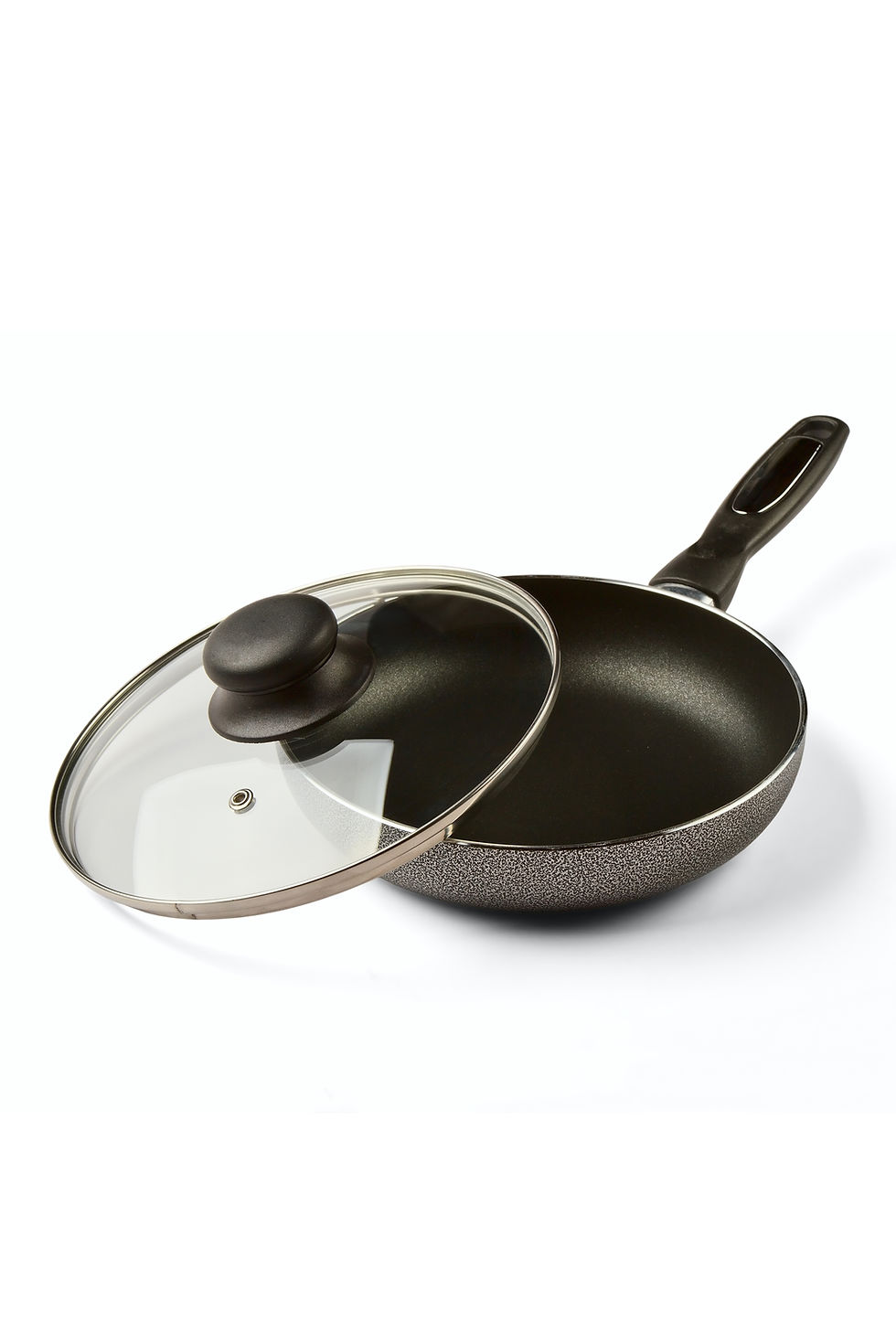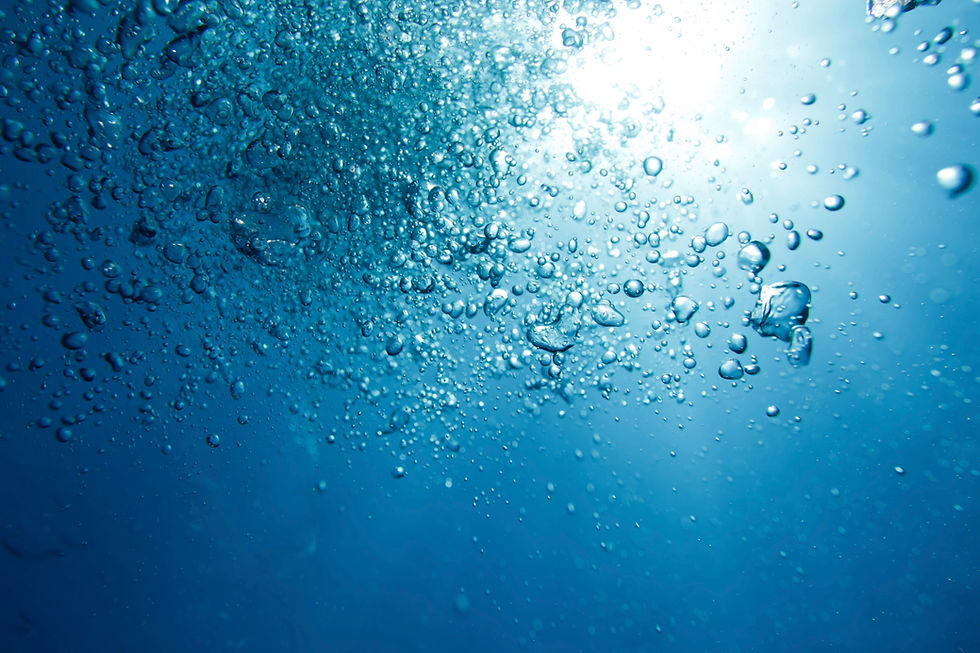Your Guide to Toxin-Free Living
- shawnaburnettfitne
- Jun 19, 2024
- 6 min read
HOW TO LIMIT ENVIRONMENTAL TOXIN EXPOSURE IN EVERY ASPECT OF YOUR LIFE

TOXIN-FREE LIVING
Why It maters
Toxins are everywhere these days. They’re in our food, water, the products we use,
and even the air we breathe. When these toxins slowly build up in our bodies, it can
harm our health and increase our risk of chronic illnesses.
Toxin exposure is linked with:
Cancer
Diabetes
Asthma
Chronic obstructive
pulmonary disorder (COPD)
Hormonal imbalances
Digestive problems
Skin issues such as eczema
and psoriasis
And more...
That’s why toxin-free living is gaining steam. Going non-toxic can feel overwhelming at
first. But once you get the hang of it, there are many benefits of natural living... for your
health and the environment.
So if you want to transition into toxin-free living but aren’t sure where to start, you’re in
the right place. This guide will show you how to say buh-bye to toxins in every corner of
your life. But first, let’s start with some basics.
What are Toxins?
Toxins are any substances that have harmful effects on humans, animals, or plants.
Toxins can be natural occurring or manmade.
Examples of environmental toxins include heavy metals, radiation, chemicals, and
pesticides. When these toxins are ingested or absorbed into your skin, it can harm
your health.
What is Toxin-Free Living?
Non-toxic living (or chemical-free living) is creating a lifestyle that limits your toxin exposure. And it’s way simpler than you think. All you do is swap out products with toxins for natural, non-toxic versions.
AVOID THESE

There are hundreds of environmental toxins. While we can’t avoid them altogether, we can limit our exposure. This benefits our health and the environment.
As mentioned environmental toxins increase the risk of cancer, diabetes, and other chronic illnesses. But they also disrupt your endocrine system, which regulates your hormones. When this system gets
disrupted, it can lead to developmental problems, infertility, and have adverse effects on the
nervous and immune systems. Here are some common toxins to watch out for and where they hide:

Lead
Paint
Children's Toys
Soil
Plumbing
Jewelry
Formaldehyde
House building materials (plywood, pressed-wood)
Glues and adhesives
Cigarette smoke
Fuel-burning appliances
Radon
Home air (second leading cause of lung cancer in the US)
Water
Mercury
Seafood
Silver dental fillings
Broken thermometers
Broken CFL bulbs
Cadmium
Batteries
Plastics
Metal coatings
House dust
BPA's
Plastic food and drink packaging
Metal can linings
Thermal paper receipts
Parabens
Cosmetics
Shampoo and conditioner
Packaged foods
Skin care
PFAS
Cookware
Clothing
Cosmetics
Drinking water
Wrappers
Stain resistant furniture
Phthalates
Shampoo and conditioner
Cosmetics
Lotions
Deodorant
Nail Polish
Anything that says "fragrance"
Pesticides
Non-organic foods
EWG's Dirty Dozen (most contaminated produce)
Benzene
Laundry Detergents
Tobacco Smoke
Gasoline/Oil
Pesticides
Inks
Plastics
Arsenic
Soil
Rice
Fish
Drinking water
FOODSTORAGE
Storing and reheating foods in plastic is a no-no. Plastic food containers and water bottles

contain endocrine-disrupting chemicals such as bisphenol-A (BPA) and phthalates.
When you store or reheat food in plastics, these chemicals can leach into your food. This can disrupt your hormones and harm your health. One easy way to avoid this is to swap out plastic food containers or water bottles for glass and stainless steel. These options are not
only safer for your health, they’re better for the environment. Win-win! Also, keep in mind, BPA hides in the lining of some canned foods. So when grocery shopping, opt for canned goods labeled “BPA-free.”
Other helpful tips:
Avoid plastic bottles with
recycle number 3, 6, 7,
or 9 (usually found on
the bottom of the bottle)
If you need to drink
water out of a plastic
bottle, recycle numbers
1 or 2 are best.
EWG article named 78
brands that use BPA in
their cans and 31
brands that do not.
COOKWARE
All cookware is not created equal. The coating in non-stick

cookware, while handy, contains harmful chemicals like PFAs. PFAs are linked with cancer, reproductive issues, and weakened immune function. Non-stick cookware made before 2013 can be especially harmful, as it may contain PFOA. This chemical was found to increase the risk of cancer and was banned in 2013.
While PFOA may be gone, there are still many harmful PFAS in non-stick cookware. When non-stick pans are scratched, these
chemicals get released into your food.
So if your non-stick cookware is scratched, it’s time to replace it! Go with ceramic, cast iron, or stainless steel cookware instead. They are the safest and most health conscious options.
HOUSEHOLD CLEANERS
It's time to phase out the windex, tide pods, and clorox bathroom cleaners. These

cleaning products often have neurotoxins, hormone disruptors, and carcinogens that can have short and long term health effects. Luckily, you can still keep things clean without adding more toxins into your
home. Simply swap those chemical-laden cleaners out for more natural alternatives. Vinegar, baking soda, essential oils, castile soap, and borax can be used as natural cleaners. For example, try a combo of baking soda and vinegar to clean your tub and shower. And here’s a simple recipe for a natural all-purpose cleaner:
If you’re rather not go the DIY route, there are several natural cleaning products available today. Here are some brands to look out for:
Seventh Generation
Branch Basics
Dr. Bronner’s
Aunt Frannie’s
Attitude
EWG’s Top Green Cleaning Products can also point you in the right direction. Switching over all of your cleaning products can feel overwhelming, so start slow. When something runs out,
replace it with a more natural option.
DIY All-Purpose Cleaner
Combine the following in a glass spray bottle:

8 ounces distilled white vinegar
8 ounces water
10-15 drops essential oils (optional)
If you do add essential oils, lavender, lemon, tea tree,
peppermint, or eucalyptus are all excellent options.

SKINCARE & COSMETICS
Skin is the largest organ in our body. And what we

put on our skin can be directly absorbed into our bloodstream. A great example of this would be nicotine patches which deliver nicotine through the skin and help decrease symptoms of withdrawal when quitting smoking. Every single day we put a variety of substances onto our skin. Between personal care products and
cosmetics, the average women applies 168
chemicals to her skin every day! Many of these products contain chemicals that are
neurotoxins, carcinogens, or endocrine
disruptors. That’s why it's so important to choose clean skin care products.
EWG’s Skin Deep Database is an excellent resource to help you find natural skincare,
haircare, oral care, and cosmetics. It rates the safety of over 101,000 personal care products, including shampoo, toothpaste, lotion, body wash, facial cleanser, cosmetics, and more. There’s even a handy app so you can keep this info at your fingertips while shopping! Both iPhone and Android options are available.
Ideally, choose products with the EWG Verified stamp of approval.

Here are some clean skincare and haircare
brands to look out for:
Attitude
Just the Goods
Avalon Organics
Rooted Beauty
And here are a few natural cosmetic brands:
Well People
Ilia
RMS
Kosas
Honest Beauty
Beauty Counter
Mineral Fusion
AIR
Air pollution is caused from car emissions, chemicals from large factories, mold, dust,

pollen, and more. But that’s just outdoor air. According to the EPA, indoor air quality can
be 2 to 5 times worse than outdoor air! And the average American spends nearly 90% of their time indoors. Furniture, carpet, mattresses, and building materials can off gas toxic chemicals like formaldehyde into our homes. Cleaning products and personal care products only add to
our household’s toxic load. It's impossible to escape it altogether But we can decrease our exposure by purifying the
air in the places where we spend the most time.
How to Improve Your Indoor Air Quality
Use an air purifier in your home.

Keep plenty of houseplants. They act as natural air purifiers. Some of the best air purifying plants are peace lily, pothos ivy,
spider plant, snake plant, aloe vera, queen fern, and rubber plant. Open windows regularly to help with circulation. Take off your shoes when entering your home. Toxins can stick to your shoes and make
their way inside.
WATER
About 60% of the human body is made of water. We can’t survive with it! The trouble
is, toxins can lurk in our water too. Contaminants like arsenic, heavy metals,
pesticides, ammonia, bacteria, and even prescription drugs work their way into
our water supply. These toxins can be extremely harmful to our health.
Plus, most water treatment facilities use chlorine to disinfect water. While this kills
bacteria, it can pose health problems as well. Showering, bathing or swimming in
chlorinated water can cause dry, itchy skin, damage hair, and lead to respiratory
issues.
How to Improve Your Water Quality
Filter your drinking water. You can use a water filter pitcher, faucet mounted filter, or even invest in a whole home filtration system. If you’re in the market for a water filter, Berkey is excellent brand. Use a shower filter. These attach to your showerhead and remove
chlorine and other toxins from your water. Use a bath ball water filter. Same concept here, but for bath lovers. These filter contaminants from your bathwater so you can safely soak
away.



Comments